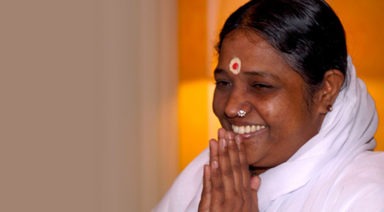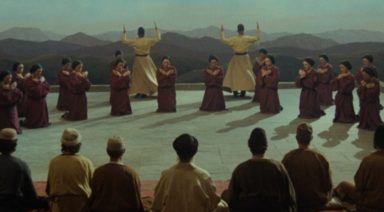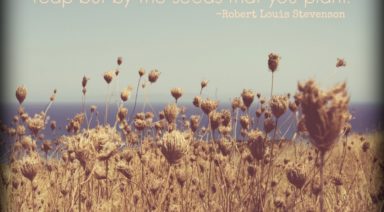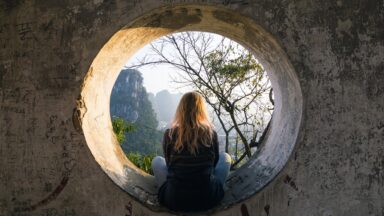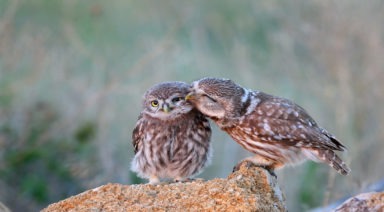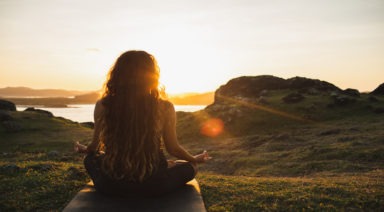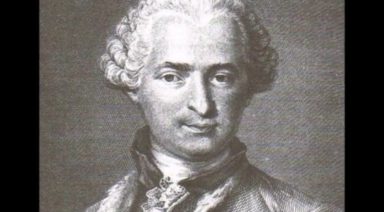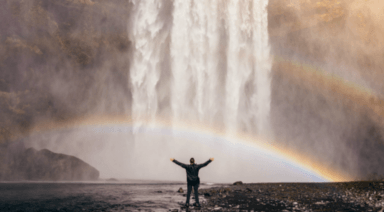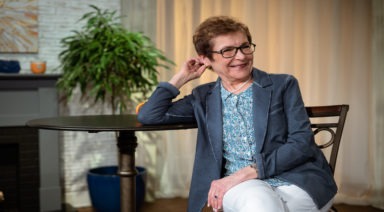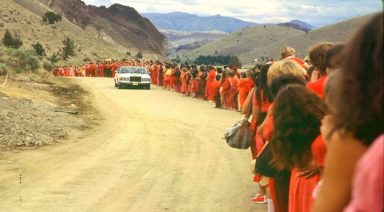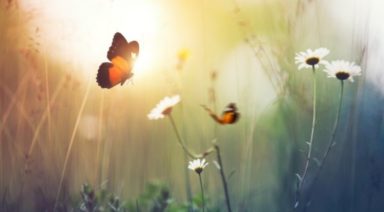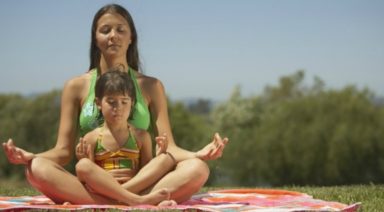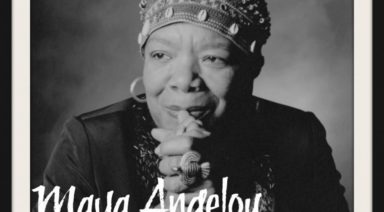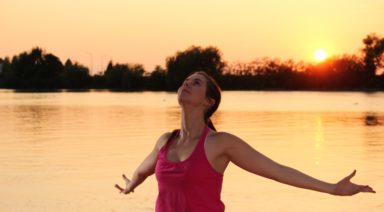How Practicing Gratitude Increases Our Abundance
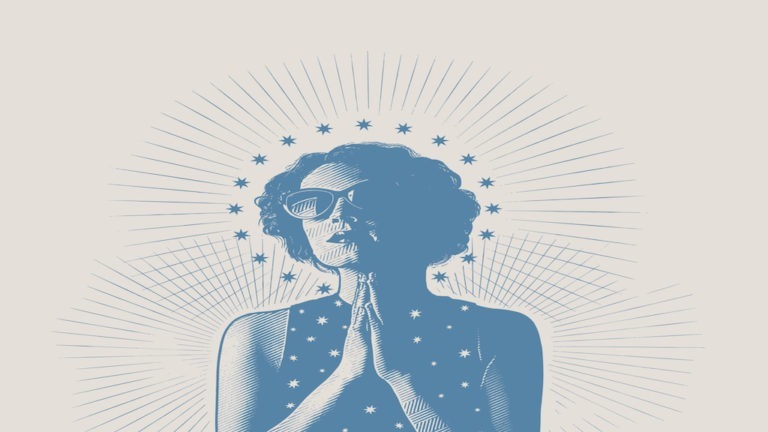
Both gratitude and abundance are states of mind. They are not dependent on the actual outer provisions or circumstances we have at any given moment. It is our belief in abundance or the lack thereof that creates our experience of it. And our ability to be grateful for what is present that brings more goodness to us. The Yoga Sutra that addresses this says:
“Acknowledging abundance (aparigraha) we recognize the blessings in everything and gain insights into the purpose for our worldly existence.”
Sutra 2.39 translation by Nischala Joy Devi, The Secret Power of Yoga
Acknowledging Abundance
The first key word to note from this sutra is “acknowledging.” Abundance exists all around us all the time. The Universe is an ever renewing, incredibly infinite source of potential. Yet we often keep our vision so trained on the tiniest little speck of reality, that we block the flow of this infinite potential into our minds, hearts, and lives. We focus on what we don’t have instead of giving gratitude for all that we do have. And we suffer because of our limiting beliefs and limited perceptions. When we remember that the truest source of all resources is inexhaustible, and we place ourselves into the stream of infinite potential, we open into all the goodness, joy, beauty, love, opportunities, support, guidance, and creativity that life has to offer. Spirit is our constant storehouse of abundance.
Recognize the Blessings in Everything
The other essential teaching in this sutra is to “recognize the blessings in everything.” That means that even when we hurt or struggle, even when we are frustrated or feel tremendous lack, that we see the inherent opportunity to “acknowledge abundance.” We may not love the process of personal growth that comes through suffering, yet we can be grateful for its value in the long run. If we could really accept that every situation, every experience, every encounter holds a blessing for us, what a difference we would feel when faced with challenge. Instead of being afraid or pushing it away, we could embrace it as a gift of abundance from the Universe.
This is a paradigm shift much like the old question, “Is the glass half empty or half full?” By choosing to acknowledge abundance and blessings even when things aren’t exactly as we would like them to be, an amazing thing happens. We open ourselves to the flow of infinite Universal energy. If we hold on or hold back, we impede this flow. ‘Holding’ often comes in the form of believing that we don’t or won’t have “enough.” And this leads to mental restriction, lack of generosity, and availability to life. The energy of abundance requires the ebb and the flow, the receiving and the giving.
Perceiving Our Purpose
The last aspect to consider in this sutra has to do with perceiving our “purpose.” It promises that as we develop an abundance consciousness, we begin to see more clearly the meaning and purpose of our lives. The beautiful thing about abundance is that when we start looking for it, it appears everywhere. Although outwardly we may feel we have little to spare or share, by seeing the ‘glass half full’ we bypass the perceived lack, and find the ways in which we do have abundance. To share the love in our hearts, to offer time for service or a listening ear to someone who needs support gives purpose to anyone’s life. As we magnify the love in our hearts through the glass of abundance, giving freely, we receive even more in return.
So don’t wait for Thanksgiving to express gratitude or to experience abundance. Take some silent moments to open up to and feel the infinite blessings that surround you. Immerse yourself in the flow of Divine abundance now.
Amma: The Loving, Hugging, Humanitarian Saint

As of the date of this article, Amma has hugged attendees to her programs over 40 million times. Her free events attract thousands upon thousands of people, often taking place in football stadiums. In the early days, when 50 or 60 people were in attendance, Amma was known as “Ammaji” or “Ammachi.”
It was 1990 when I first met Amma. She was seated on a tattered, cushioned chair in the center of a small, basement room in The African-Methodist Episcopal Church in Central Square, Cambridge, MA.
The moment I walked into the room, I was so profoundly struck by Amma’s light and presence that I fell to my knees and bowed to her. I spent the rest of the day sobbing in absolute bliss, happily crouched in a corner. In addition to a few Swamis and helpers, there were less than ten other people in the room.
While indulging my tears, Amma caught my eye and invited me to her chair. I was so nervous, I could barely speak. I walked toward her, awkward and self-conscious, as if it were my first time walking. I bowed and she immediately took my hand, then gently bent me across her lap.
Amma then gently rubbed my body from head to toe while I cried. She massaged my scalp and forehead and patted my spine. Amma even squeezed my ears and tussled my hair. It felt as though I were embraced by the most loving bundle of light.
After 20 minutes of her healing touch, Amma lifted my head with her soft hands and pressed her cheek and lips against my ear. She lovingly whispered Sanskrit mantras to me as I absorbed every morsel of her love.



